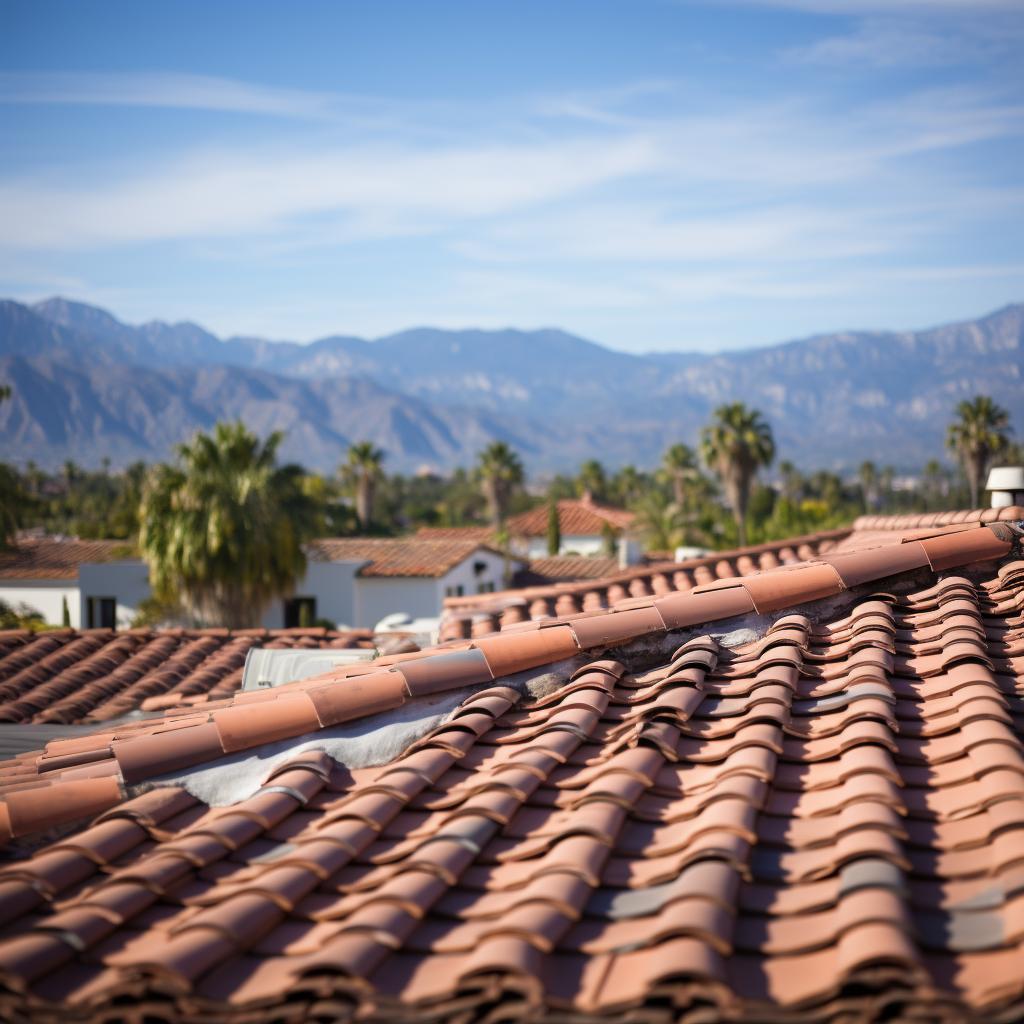When the people of Ontario thought they had seen all the challenges their roofs could face, nature proved them wrong with an unforeseen catastrophe. It was an incident that many homeowners were unprepared for and it raised alarms about the need for vigilant roof maintenance and expert analysis. At the forefront of this event were a select group of specialists, well-versed in the nuances of Ontario roof repair, who had anticipated such a disaster when others did not.
The value of such expertise can never be overstated, especially when it concerns something as crucial as roofing-a primary line of defense for any structure against the elements. This proficiency in predicting potential issues is not merely a matter of convenience; it’s essential for preventing significant distress to homeowners and averting extensive damage to property.
As we step into an exploration of what happened and how it might have been avoided, it’s clear that those who truly understand the intricacies behind roof integrity can offer more than just repairs; they offer foresight that can save homes.
This article delves deep into the recent roofing calamity that caught many by surprise, emphasizing how expert prediction is pivotal in counteracting such disasters. We will examine why maintaining one’s roof is not just about immediate repairs but involves understanding a broader context – including weather patterns, material longevity, and structural requirements – which our seasoned professionals within Ontario’s robust roofing industry managed to decode before anyone else sensed impending trouble.
The Sky’s Surprise
In the heart of Ontario, residents and business owners alike were taken aback by a roofing disaster that seemed to spring forth from nowhere. It wasn’t merely a typical seasonal storm or the expected wear and tear that comes with time-it was an extraordinary event that wreaked havoc on structures throughout the region.
This catastrophe came in the form of a violent hailstorm, accompanied by high winds which tore through neighborhoods, stripping shingles off roofs and causing severe structural damages that left many without safe shelter. Eyewitnesses described golf ball-sized hailstones battering rooftops with relentless fury, leaving them dented, punctured, or completely exposed to the elements.
The initial reactions from both the public and professionals ranged from disbelief to outright panic. Homeowners surveyed their properties in dismay as they dealt with leaks, openings, and subsequent water damage following the unexpected onslaught. Roofing companies received a deluge of emergency calls as they scrambled to assess and address the widespread damages.
Social media platforms buzzed with images and videos showcasing streets lined with debris and homes with visible sky where their roofs once stood staunchly against the horizon. Local news outlets reported on both immediate impacts on families seeking temporary shelter and long-term concerns regarding repairs during a time when resources might be stretched thin.
As professionals began responding to calls for help, conversations shifted toward assessing why this event had caught so many by surprise. The scale of damage indicated that roofs across Ontario were not prepared for such extreme weather conditions-a reality check about our awareness of environmental challenges and shifting weather patterns.
Calls for ontario roof repair surged exponentially as insurance companies braced themselves for an influx of claims related more specifically to roofing damage than they had seen in decades past; underlining not just how unexpected the event was but also how ill-prepared we are for such extremes outside our expectations.
The Role of Roofing in Home Safety and Integrity
The role of a properly functioning roof in maintaining the safety and integrity of a home cannot be overstressed. While many homeowners recognize the aesthetic value of a well-maintained roof, it’s the less visible benefits that deliver the most critical protection.
At its core, a solid roof acts as the first line of defense against environmental hazards such as heavy rainfall, high winds, snow, ice, and even ultraviolet light from relentless sun exposure. These elements can adversely affect a house’s structure if not properly shielded by a durable roofing system.
Neglecting roof maintenance is an open invitation to potential emergencies and long-term structural problems. A compromised roof may lead to water infiltration which can cause extensive damage to insulation, ceilings, walls, and even electrical systems. Over time, this moisture encroachment can contribute to mold growth, undermining both the health of occupants and the stability of the building itself.
Regular inspections and Ontario roof repair work are pivotal in preventing such decay. By keeping an eye on wear and tear or resolving minor issues before they escalate into significant ones, homeowners ensure their safety while also preserving or potentially increasing their property value.
Understanding these risks often prompts homeowners to implement proactive measures rather than wait for reactive solutions post-disaster. Proactive maintenance includes routine inspection and immediate repair of minor damages identified during assessments. This approach mitigates larger expenses associated with any potential roofing catastrophe by addressing small issues head-on.
| Roofing Issue | Proactive Solution |
|---|---|
| Missing or Broken Shingles | Immediate replacement and repair to prevent water intrusion |
| Clogged Gutters | Cleaning gutters seasonally to allow proper drainage |
| Damaged Flashing | Tightening or replacing flashing around chimneys, vents, and skylights |
Maintaining a solid grasp on roof upkeep indeed plays an essential role in ensuring home safety; consequently reducing future risks for owners who value their homes’ function as much as their form.
Predicting the Unpredictable
Ensconced within the broader community of home maintenance professionals, a cadre of sagacious Ontario roofing experts stood out for their extraordinary prescience. In the lead-up to the unforeseen calamity, it was these seasoned veterans who spotted early warning signs that others had glossed over. The expertise and experience of these individuals allowed them to detect subtle cues that indicated an imminent roofing disaster-cues that were ultimately corroborated when homeowners across Ontario found themselves grappling with unprecedented roofing failures.

What separated these specialists from their peers were not just years on the job but an attunement to anomalies often mistaken for mundane wear and tear. Foremost among the indicators they identified were:
- Inconsistent shingle wear patterns suggesting underlying structural issues
- An upsurge in granular loss from asphalt shingles well before their expected lifespan
- Unusual moisture accumulation in attics hinting at insufficient ventilation and potential roof decking compromise
These symptoms were systematically underappreciated by many until they coalesced into larger, systemic problems that revealed themselves during the catastrophe.
The chronicles of roofing challenges are replete with instances where foresight may have spared homeowners a significant amount of distress and expense. This particular event served as a stark reminder of how imperceptible shifts can presage major issues. Ontario roof repair experts employ an array of diagnostic tools-a virtual arsenal-to assess roof health unobtrusively and accurately.
Thermal imaging cameras, moisture meters, and even drone technology all play roles in their predictive toolkit. When inexplicable temperature variations or dampness were detected without explicit sources of leaks, these astute professionals flagged them as harbingers warranting further investigation and potentially preemptive intervention.
In addition to tool-based insights, profound local knowledge about historical weather patterns in Ontario informed these experts’ readiness strategies. Understanding how specific regional climate challenges-such as ice damming, wind uplift resistance requirements, or increased load due to heavy snowfall-impact roofing materials helped them anticipate which roofs might not be up to code or nearing failure under extreme conditions.
Ontario’s expert roofers demonstrate a remarkable knack for divining issues before they burgeon into full-blown crises; their ability to predict the unpredictable is both an art honed through experience and a science buttressed by technological advancement. Their forward-thinking approach underscores the exigency for continuous education within the realm of roof maintenance and repair among homeowners and industry professionals alike.
Ontario Roof Repair
When the unexpected roofing catastrophe struck Ontario, homeowners faced the harsh reality of consequential damage and costly repairs. Yet, it need not be said that a stitch in time saves nine – this adage holds particularly true when discussing roof maintenance.
Proactive measures not only safeguard the integrity of your roof but also preempt serious damage when extreme events occur. In the wake of the disaster, it became evident that regular Ontario roof repair and assessment are essential practices for home maintenance.
Proactive roof maintenance involves routine inspections, timely cleaning to prevent blockages and water build-up, and immediate attention to minor wear and tear. By undertaking these measures, homeowners can extend the lifespan of their roofs and circumvent substantial damage linked to both natural aging processes and extraordinary circumstances.
Conversely, reactive solutions come into play post-disaster or once significant damage is discovered. Often associated with higher costs and extensive remediation efforts, reactive repairs are a less desirable path that many unfortunately had to take following unforeseen events in Ontario.
The difference between proactive and reactive care was starkly highlighted by examining the repercussions for those who neglected routine maintenance. Homeowners found themselves scrambling for emergency services – facing longer wait times for contractors swamped with requests for urgent Ontario roof repair work.
Cost-effectiveness stands out prominently here; emergency repairs typically come with a hefty price tag due to the immediacy of service required and potential complexity that arises from worsened conditions. Furthermore, there are safety implications involved as delays or temporary fixes may expose residents to increased risks until proper repair works are completed.
The lesson imparted by this event stresses an undeniable truth – foresight in care takes precedence over after-the-fact solutions where scenarios like these unfold. Regular assessments by qualified professionals can catch subtle signs indicative of broader problems on the horizon. This preemptive strategy doesn’t just protect against material loss or financial strain but also champions homeowner safety which is paramount above all else.
The Science of Roofs
The world of roofing is not just about shingles and gutters; it’s a complex field that requires an understanding of weather patterns, materials science, and the latest in technological advancements. With these tools at their disposal, Ontario experts were able to predict the roofing catastrophe that caught many by surprise.
This ability to foresee potential problems is critical, as it can save homeowners from the heartache and financial strain of unexpected repairs-or in worst-case scenarios, complete roof failure.
Advanced Warning Systems for Roofing Integrity
In the quest to prevent roofing disasters, experts have developed advanced warning systems that can detect early signs of failure. These systems monitor various factors such as moisture levels, structural integrity, and thermal efficiency. For instance, infrared scanners can reveal areas where heat is escaping, indicating poor insulation or potential leaks.
Similarly, moisture detection equipment can alert homeowners to water intrusion issues before they lead to significant damage. By integrating these tools into a regular maintenance routine, Ontario roof repair specialists can proactively address issues before they escalate into more severe problems that might require a full roof replacement.
Aerial Surveying and Predictive Modeling
Another technological innovation reshaping how we approach roof maintenance is aerial surveying using drones equipped with high-resolution cameras and other sensors. Drones offer a unique vantage point and allow for close-up inspections of roofs without putting inspectors at risk.
The data collected from these drone flights feed into predictive models that use historical weather data and current roof conditions to forecast future weaknesses or points of failure. As a result, property owners receive detailed reports on their roofs’ health and are given recommendations on preventative measures well in advance.
Implementing Smart Roof Technologies
Smart technology also finds its way onto rooftops across Ontario. Modern roofs can be outfitted with sensors connected to smart home systems allowing for real-time monitoring of roofing conditions.

Alerts can be sent directly to homeowners’ smartphones if an issue arises, facilitating swift action against potentially damaging elements like ice dams or accumulating heavy snow loads. Additionally, materials are getting smarter too-innovative products now include shingles with built-in wear indicators or coatings designed to change color when reapplication is needed.
Through ongoing education about these technologies’ capabilities combined with vigilant surveillance of their own roofs provided by trusted professionals offering Ontario roof repair services, residents stand the best chance at combating the unpredictability brought on by both Mother Nature and material wear-and-tear over time. Meanwhile, employing such advanced technologies continues to affirm the crucial role science plays in maintaining safe and durable homes across the region.
Real Stories of Prevention and Recovery
In the wake of the unforeseen roofing catastrophe, stories of resilience and proactive measures have begun to surface from all over Ontario. These narratives not only highlight how foresight can make a significant difference but also shed light on the steps toward recovery following such an event. By paying attention to these real-life cases, homeowners and professionals alike can gain valuable lessons.
Preventative Success: A Tale of Timely Intervention
Among the accounts is that of a small suburban neighborhood where several homeowners had taken heed of their roofs’ warning signs and acted promptly even before the catastrophe struck. They reached out to seasoned Ontario roof repair services for regular inspections, which revealed minor damages that could lead to severe consequences if left unaddressed.
Due to this early detection and response, when the disaster hit, these homes remained mostly unscathed apart from some superficial damage. This preventative approach stands as a testament to taking expert advice seriously and serves as an illustrious example for others about the benefits of preemptive maintenance.
The Aftermath: Navigating Towards Normalcy
Contrasting with prevention tales are sobering stories of post-catastrophe recovery that illustrate just how devastating negligence can be. One particular story involves a century-old heritage home whose neglected roof suffered extensive damage under extreme weather conditions during the catastrophe. The owners faced a staggering amount of destruction which led them on an arduous journey towards restoration.
Through a collaborative effort with local Ontarian experts specializing in historical structures, they managed to salvage what was left of their home’s original character while bolstering its resilience against future incidents. Their experience underscores not only emotional perseverance but also the intricate process involved in restoring rather than just replacing.
Community-Driven Repair Efforts
Greater still is the narrative emerging from community initiatives where neighbors converged to support one another in rebuilding efforts-illustrating yet again the spirit and resolve born from shared hardship. In one small town affected by the roofing disaster, residents set up communal funds dedicated to helping those financially incapacitated by needed repairs for safety compliance post-catastrophe.
With pooled resources they were able attract skilled Ontario roof repair specialists who worked diligently to restore dozens of homes at affordable rates thanks contributions from locals businesses alike – proving fierce community spirit and collective action can vastly improve recovery outcomes after such shocks.
These real stories serve as meaningful insights into how both prevention through vigilant maintenance and timely recovery efforts significantly shape outcomes in times prone structures are tested beyond their expected limits.
Lessons Learned
The roofing catastrophe that blindsided many in Ontario has served as a stern lesson to homeowners and industry professionals alike. In the wake of the disaster, it has become evident that integrating expert knowledge into construction and maintenance practices is no longer just a recommendation-it’s a necessity. The insights provided by seasoned Ontario roofers who anticipated the calamity are now being distilled into actionable strategies for future safeguarding.
Ontario’s recent experience underscores the critical need for an informed approach to building and maintaining roofs. Experts recommend regular training sessions for construction and maintenance crews to ensure they are current with the latest materials, methods, and safety standards.
These educational initiatives facilitate a transfer of knowledge from experienced roofers-who understood how certain signs foretold the potential for disaster-to those who might otherwise overlook these indicators. Additionally, roundtable discussions among professionals can promote an exchange of expertise and potentially develop standardized procedures that prioritize structural integrity over cutting costs.
As part of this collective learning process, reviewing building codes and regulations is paramount. Existing codes may need revisions to incorporate higher safety margins or new materials that experts deem more reliable in extreme conditions. To translate lessons learned into practical applications, authorities might consider engaging with roofing specialists during policy-making deliberations. Furthermore, incorporating findings from post-catastrophe analyses could drive updates to regulatory frameworks-ensuring they reflect the contemporary challenges faced by Ontario’s homes and buildings.
| Advisory Aspect | Recommended Action |
|---|---|
| Education & Training | Implement ongoing professional development opportunities for industry workers. |
| Regulatory Review | Conduct thorough examinations of building codes with input from experienced roofers. |
| Safety Margin Updates | Increase safety margins in designs to account for exceptional weather events. |
| Material Evaluation | Promote usage of innovative materials identified by experts as more durable under stress. |
Adopting these measures helps bridge the gap between on-the-ground expertise and high-level policy creation-a synthesis poised to reinforce not only individual properties but also overall community resilience against future unforeseen roofing disasters.

The Importance of Choosing the Right Roofing Professionals in Ontario
When facing the daunting task of repairing or replacing a roof, especially in the aftermath of a roofing catastrophe like that which unfolded in Ontario, homeowners may find themselves overwhelmed. It is at this juncture that selecting the right Ontario roof repair professional becomes imperative. The expertise and experience of the roofer will not only impact the quality and durability of your roof but also ensure that you are appropriately advised on preventive measures going forward.
The criteria for choosing proficient roofing professionals go beyond merely finding someone who can fix the immediate problem. An expert in Ontario roofing should display thorough knowledge of local weather patterns and how they affect various roofing materials. Additionally, they should be well-versed in regional building codes and possess an array of solutions tailored to individual roofs’ needs.
Credentials such as licensing, insurance, and positive customer reviews should also play a pivotal role in your decision-making process. After all, your roof is a long-term investment; ensuring it’s handled by trustworthy professionals is essential for lasting peace of mind.
Moreover, experienced roofing professionals in Ontario often offer comprehensive services that include regular inspections and maintenance plans designed to extend the life span of your roof. These preemptive strategies can be invaluable since frequent checks might uncover minor issues before they escalate into full-blown crises requiring significant repairs or total replacement.
It’s important not to underestimate the subtle signs that could indicate underlying issues with your roof-signs that certified experts are adept at detecting and diagnosing. Investing time into finding skilled roofing professionals will thus serve homeowners well before any disaster strikes, ultimately safeguarding both their safety and their pockets.
Conclusion
As we come to the end of our exploration into the unexpected roofing catastrophe that shook Ontario, we are reminded of the critical importance of maintaining the integrity of our roofs. This incident serves as an eye-opener highlighting how a solid roof over one’s head is not just a metaphor for security but a literal necessity.
Expert foresight, such as that demonstrated by seasoned roofing professionals in Ontario, proves invaluable in preventing potential disasters and ensuring the safety and longevity of homes and commercial buildings.
Moreover, this event underscores the stark contrast between proactive maintenance and reactive repairs. Through regular assessments and timely Ontario roof repair, homeowners can safeguard their properties from severe damage while also benefiting from cost savings in the long run.
Proactive measures are not only economically sensible; they are essential steps to protect against unexpected threats from above. Homeowners would do well to heed this lesson: consistent vigilance in roofing care is far more than a mere precaution; it’s an investment in peace of mind.
Finally, through sharing real-life stories of how expert prevention led to avoided calamity, and tales of efficient recovery post-catastrophe, it’s evident that selecting skilled professionals for your roofing needs is paramount. As readers consider their own roof maintenance decisions, trust in proven experts-who use advanced warning technologies and who operate with deep understanding-becomes central.
Acknowledging this wisdom will not only serve individuals looking after personal properties but also influence industry standards and homeowner practices moving forward.
The unexpected roofing catastrophe has indeed been a stern teacher for many across Ontario. Yet with attentive care toward roof maintenance and partnership with knowledgeable Ontario roof repair professionals, residents can transform what might have been dire misfortune into well-managed risk-a journey from vulnerability towards resilience.
Frequently Asked Questions
Do Roofers Need to Be Tied Off Ontario?
In Ontario, roofers are required to adhere to stringent safety regulations, which include the use of fall protection systems. When working at heights of over 3 meters (approximately 10 feet), a roofer must be tied off to a secure anchor point using an appropriate fall arrest system as stated by the Ontario Ministry of Labour’s regulations.
How to Repair a Damaged Roof?
Repairing a damaged roof typically involves identifying the problem area, such as missing shingles or leaks, and then addressing that specific issue. A professional roofer will remove the damaged material, assess the extent of any underlying damage, and replace it with new materials to restore integrity to the roof.
Can You Repair Parts of a Roof?
Yes, you can repair parts of a roof instead of replacing the entire structure. This is common in cases where damage is localized, such as when a few shingles blow off during a storm or when there’s a minor leak caused by an isolated incident. Repair work can extend the life of your existing roof if done correctly.
What Is the Most Expensive Part of a New Roof?
The most expensive part of a new roof is often the materials chosen for roofing surfaces since high-quality materials like slate or copper cost significantly more than basic asphalt shingles. Additionally, labor can become quite costly depending on the complexity and pitch of the roof.
How Big Is the Roof on a 2000 Sq Ft House?
The size of the roof on a 2000 square foot house can vary greatly due to factors like pitch and design but typically has more surface area than the footprint because roofs are rarely flat. However, without considering these additional factors, one could estimate that it may approach or exceed 2000 square feet itself.
How Many Squares Does It Take to Roof a 2000 Square Foot Home?
Roofing projects are measured in squares; each square covers 100 square feet. To cover a home of 2000 square feet does not directly translate into 20 squares due to additional space caused by roof pitch and overhangs—an estimation could require around 22-26 squares after factoring those elements.
How Do You Calculate Roof Cost?
Calculating roofing costs involves measuring total square footage, factoring in waste percentage for cutting and fitting (usually about 10-15%), selecting quality of materials and determining their cost per square foot including underlayment and flashings; then adding labor charges based on difficulty level and time expected for completion.
How Many Squares Is a 2000 Foot Roof?
A roofing “square” measures 100 square feet so if the actual roofing surface is exactly 2000 square feet without accounting for waste or special features such as dormers or valleys that might increase coverage area, it would equate precisely to 20 roofing squares based on this standardized measurement system used by contractors.


